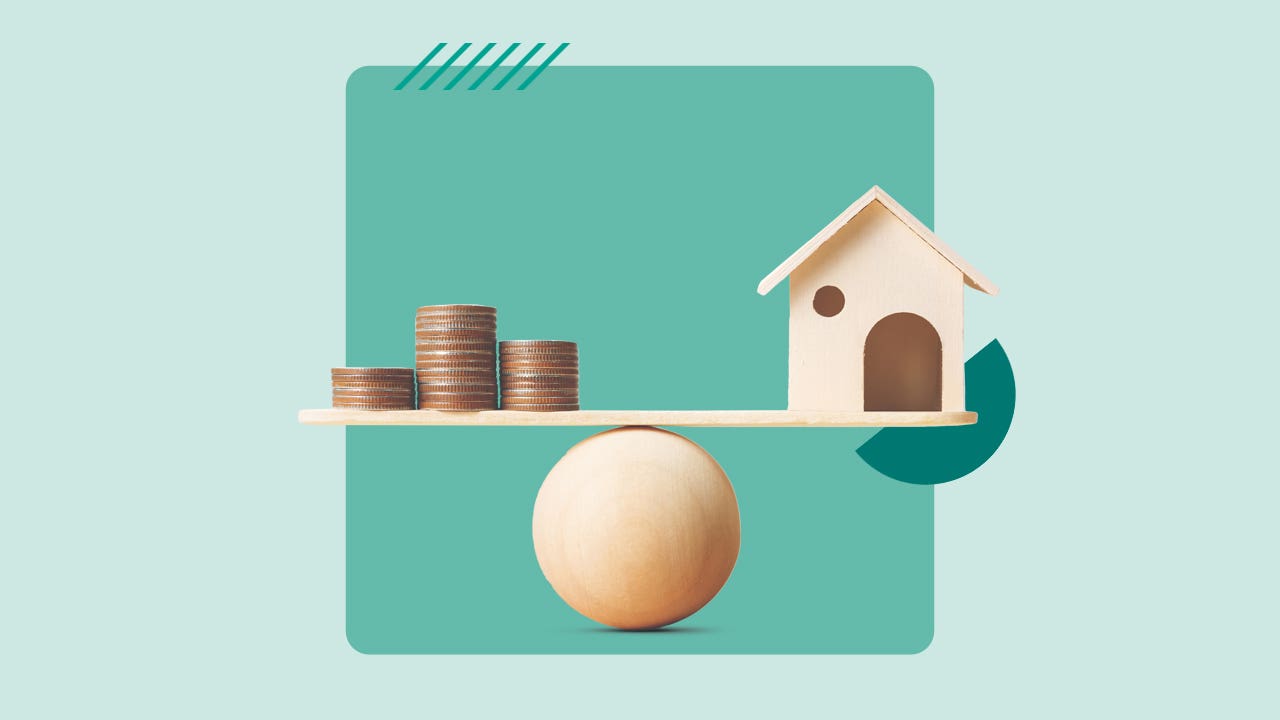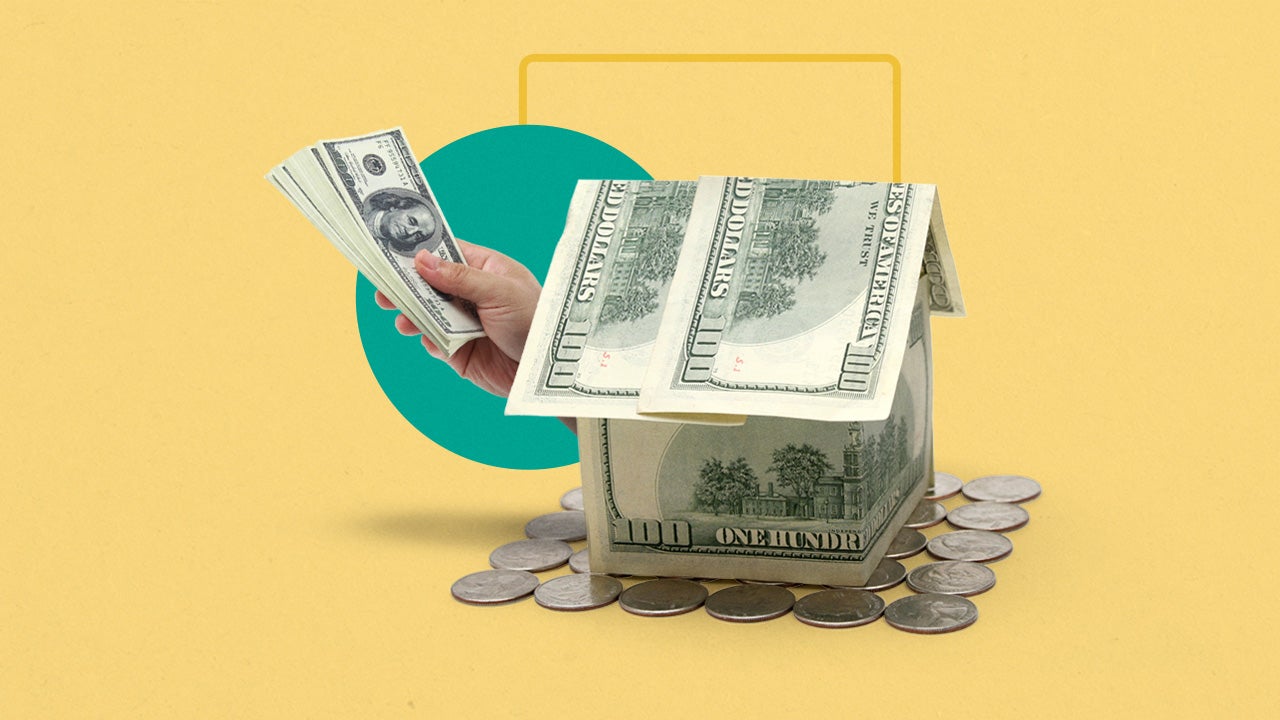Mortgage refinance: What is it and how does it work?

Key takeaways
- Refinancing replaces your current mortgage with a new one, adjusting the rate, term or both.
- With refinancing, you can change the loan type and your lender.
- To refinance a mortgage, you’ll pay between 2 and 5 percent of the loan amount in closing costs, so if you’re refinancing to save money, you’ll need to calculate your break-even point.
What is refinancing?
Refinancing is a strategy lenders and borrowers use to replace an existing mortgage with a new one. Borrowers often refinance to change their original mortgage’s interest rate or loan terms. You can refinance with your current lender or work with a different one.
How does refinancing work?
When you refinance your home, you’ll apply similarly to when you applied to purchase your home. In many ways, the process is like a less strenuous version of getting a purchase mortgage. Here’s generally how it works:
- The lender will run a credit check.
- You’ll turn in any required financial documentation.
- You’ll pay for a home appraisal.
- The loan will go through the mortgage underwriting process.
- The process will be completed in an average of 30 to 45 days.
The average time to close on a refinanced mortgage was 48 days as of January 2025, according to ICE Mortgage Technology.
Types of mortgage refinance
There are many types of refinancing, so consider each within the context of your unique financial situation. Your goal might be to adopt a shorter loan term, or maybe your focus is to lower monthly payments. Here’s a breakdown of each.
How to refinance your mortgage
What happens when you refinance your home or rental property? Refinancing is similar to the purchase mortgage application process: The lender reviews your finances to assess your risk level and determine your eligibility. Here’s what you can expect:
- Set a clear financial goal
- Check your credit score and history
- Determine how much home equity you have
- Shop multiple mortgage lenders
- Get your paperwork in order
- Prepare for the home appraisal
- Come to the closing with cash, if needed
- Keep tabs on your loan
Step 1: Set a clear financial goal
There should be a good reason why you’re refinancing a mortgage, whether it’s to reduce your monthly payment, shorten your loan term or pull out equity for home repairs or debt repayment.
What to consider: If you reduce your interest rate but restart the clock on a 30-year mortgage, you might pay less every month, but you’ll pay more over the life of your loan in interest.
Step 2: Check your credit score and history
You’ll need to qualify for a refinance just as you needed to get approval for your original home loan. The higher your credit score, the better refinance rates lenders offer you — and the better your chances of underwriters approving your loan. For a conventional refinance, you’ll need a credit score of 620 or higher for approval.
Keep in mind: Refinancing a mortgage can temporarily impact your credit, but it’s usually minimal. When mortgage lenders check your credit to see if you qualify for a refinance, it appears on your credit report. A single inquiry can shave up to five points off your score. Plus, when you refinance, you’re closing one loan and opening another, and your credit history makes up 15 percent of your score.
What to consider: While there are ways to refinance your mortgage with bad credit, spend a few months boosting your credit score, if you can, before you contact lenders for rates. If you’re concerned about hurting your score while comparing refinance offers, try to shop for a refinance within a 45-day window. Any credit pulls in this timeframe will only count as one inquiry.
Step 3: Determine how much home equity you have
Your home equity is the total value of your home minus what you owe on your mortgage. Check your latest mortgage statement to see your current balance and figure it out. Then, check home search sites or have a professional appraisal to estimate your home’s value. Your home equity is the difference between the two. For example, if you still owe $250,000 on your home, and it’s worth $325,000, your home equity is $75,000.
What to consider: You’ll get better rates and fewer fees (and won’t have to pay for private mortgage insurance) if you have at least 20 percent equity in your home. The more equity you have in your home, the less risky the loan is to the lender.
Step 4: Shop multiple mortgage lenders
Getting quotes from at least three mortgage lenders can help you maximize your savings when refinancing a mortgage. Once you’ve chosen a lender, discuss when it’s best to lock in your rate so you won’t have to worry about rates climbing before your refinance closes.
What to consider: In addition to comparing interest rates, pay attention to the various loan fees and whether they’ll be due upfront or rolled into your new mortgage. Lenders sometimes offer no-closing-cost refinances but charge a higher interest rate to compensate.
Step 5: Get your paperwork in order
Gather recent pay stubs, federal tax returns, bank/brokerage statements and anything else your mortgage lender requests. Your lender will also look at your credit score and net worth, so disclose all your assets and liabilities upfront.
What to consider: Have your documentation ready before refinancing a mortgage to make the process go more smoothly and often faster.
Step 6: Prepare for the home appraisal
Mortgage lenders typically require a home appraisal (like when you bought your house) to determine its market value. A professional appraiser will assess your home based on criteria and comparisons to the value of similar homes recently sold in your neighborhood.
What to consider: You’ll pay a few hundred dollars for the appraisal. Let the lender or appraiser know of improvements, additions or major repairs you’ve made since purchasing your home. This could lead to a higher refinance appraisal.
Step 7: Come to the closing with cash, if needed
The closing disclosure and the loan estimate list the closing costs to finalize the loan.
What to consider: You might be able to finance the costs, which can amount to a few thousand dollars, but you will likely pay more for it through a higher interest rate or total loan amount. Do the math for yourself, but know that it often makes more financial sense to pay closing costs upfront if you can afford to.
Step 8: Keep tabs on your loan
Some lenders give you a lower rate if you sign up for autopay. Store copies of your closing paperwork in a safe place.
What to consider: Your lender or servicer might resell your loan on the secondary market either immediately after closing or years later. That means you’ll owe mortgage payments to a different company, so keep an eye out for mail notifying you of such changes. The loan terms themselves shouldn’t change, though.
Pros and cons of mortgage refinance

Pros
- You could lock in a lower interest rate.
- You could lower your mortgage payment and create more space in your monthly budget.
- You could decrease your loan’s term and pay it off sooner.
- You could tap into your home’s equity and take cash out at closing.
- You could consolidate debt — some homeowners refinance a mortgage to put student loans or other debts into one payment.
- You could change from an adjustable-rate to a fixed-rate mortgage.
- You might be able to cancel private mortgage insurance premiums to avoid paying unnecessary fees.

Cons
- You’ll have to pay closing costs.
- You might have a longer loan term, adding to your costs and delaying your payoff date.
- You could have less equity in your home if you take cash out.
- You might need to deal with borrower’s remorse if rates drop substantially after you close.
- It’s not an overnight activity: The refinancing process can take between 15 and 45 days or more.
- Your credit score will temporarily take a hit.
- Most refinances won’t affect your property taxes, but completing a remodel with a cash-out refinance can increase your home’s value — which could mean a higher tax bill.
- If you’ve paid off a significant chunk of your mortgage, refinancing might not make sense.
When to consider mortgage refinancing
The general rule of thumb is that you need to cut at least a full percentage point from your rate for refinancing to make sense.— Jeff Ostrowski, Principal Writer, Bankrate
Refinancing your mortgage is a significant financial decision, and knowing when to refinance is key. If you’re planning to remain in your home for years to come, extending your loan term to lower monthly payments — or using the equity you’ve built to finance home improvements — can make sound financial sense.
“The general rule of thumb is that you need to cut at least a full percentage point from your rate for refinancing to make sense. But the decision varies depending on your situation,” says Jeff Ostrowski, principal writer at Bankrate. “Maybe you have an FHA loan and refinancing would let you get out of mortgage insurance — that savings could nudge you toward a refi. Or perhaps you live in a state that taxes refinances — that could push the costs to a point that it doesn’t make sense.”
Knowing when to consider a refinance also depends on the general financial climate. If refinancing will mean getting a significantly higher interest rate on your mortgage, you should strongly consider not refinancing. However, refinance rates are beginning to ease from their post-pandemic highs, which could encourage some homeowners to refinance.
“For the small group of homeowners who took loans at 8 percent in 2023, now is a great time to refinance,” says Ostrowski. “For most homeowners, though, the moment has yet to arrive.”







